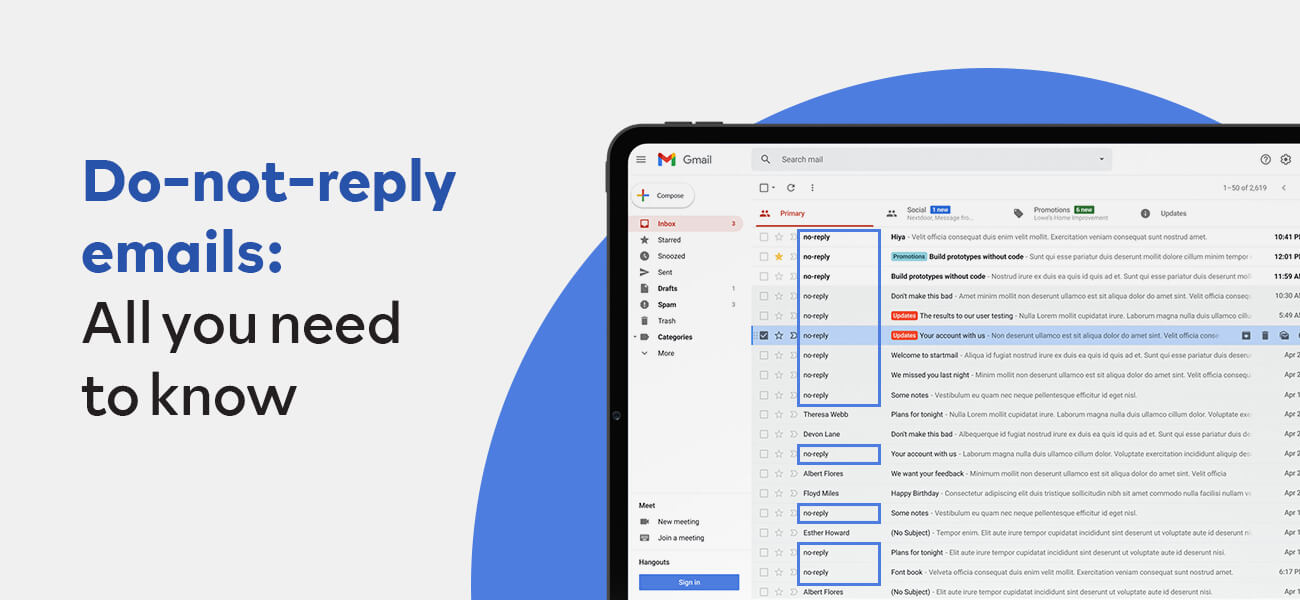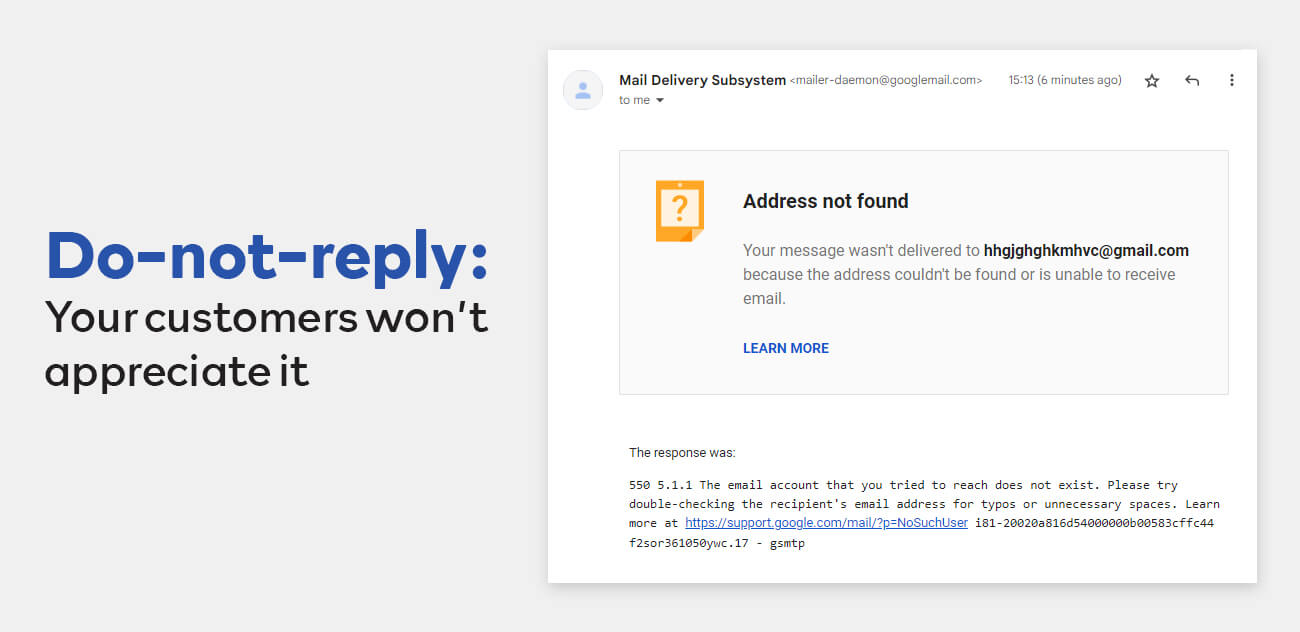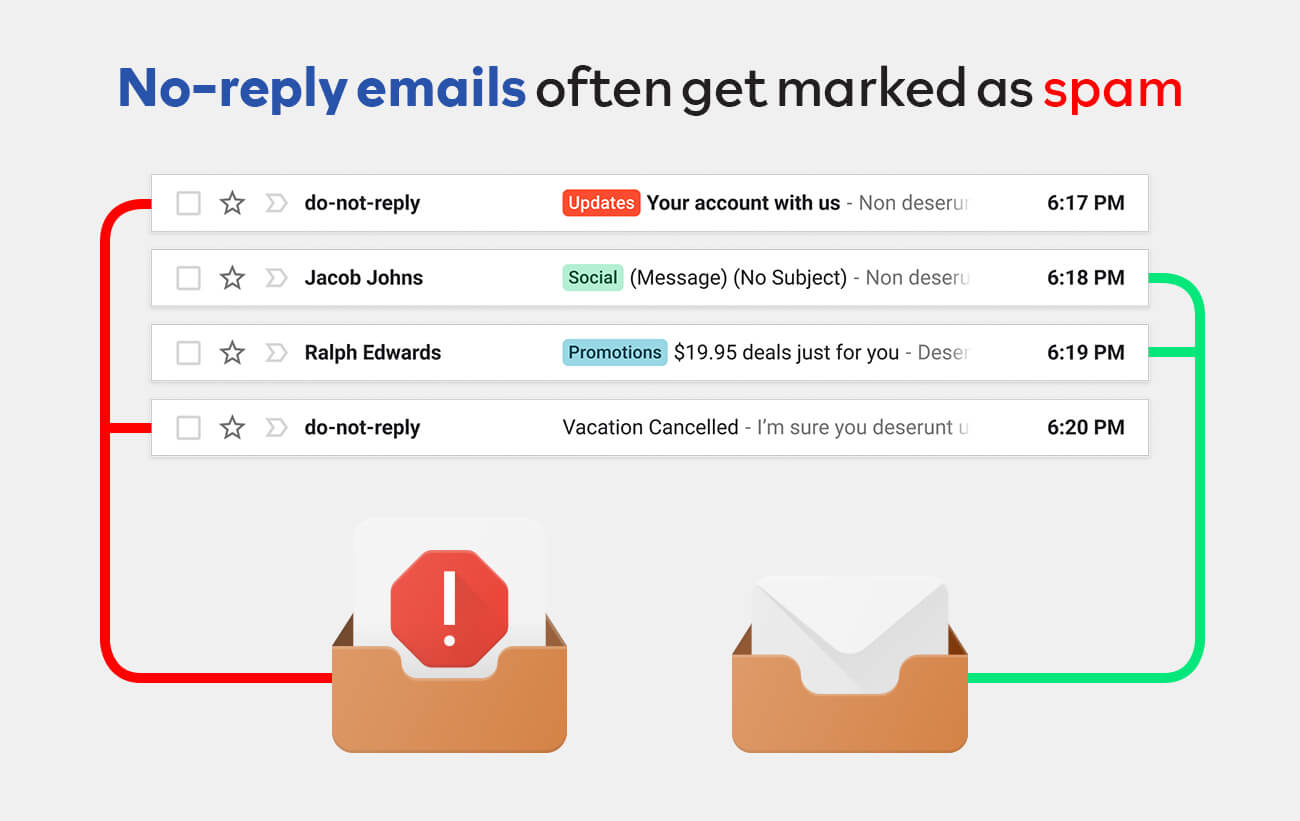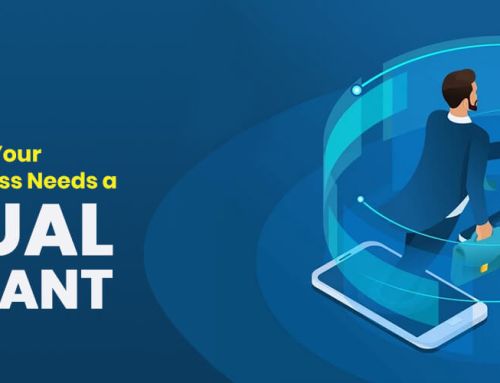Do your email marketing campaigns use a do-not-reply email address? As a business, you might feel like this practice is beneficial. However, no-reply emails have significant drawbacks and have the potential to hurt your company’s reputation.
To understand the true impact of this practice on your business, we will need to learn a little more about it. In this article, we will explain everything you need to know about do-not-reply emails. We will cover:
- What is a no-reply email address?
- What are the pros and cons of using a no-reply address?
- What are the alternatives to these addresses?

What is a do-not-reply email?
A no-reply email is an email account that can send out messages but can’t receive them. Receivers of messages from these accounts can’t respond. The sender does not monitor these accounts, which are only used to send automated messages like password reset requests, order confirmations, and notifications to subscribers. It is easy to spot such messages in your inbox, and they usually look like this:

Many businesses use no-reply addresses to send transactional emails. They make sense from their perspective, but it is a different story for the customer.
Let’s look at the pros and cons before exploring alternatives to no-reply emails.
What are the Advantages and Disadvantages of Using a No-reply Address?
A no-reply email address is an email ID that allows you to send messages but doesn’t allow receivers to respond. They are used to send automated messages like password reset requests, order confirmations, notifications, etc. It is easy to spot such messages in your inbox, and they usually look like this:
Many businesses use no-reply addresses to send transactional emails. They make sense from their perspective, but it is a different story for the customer.
Let’s look at the pros and cons before exploring alternatives to no-reply emails.
Disadvantages of Using a No-reply Address
Makes customers frustrated
When someone replies to a no-reply email, the sender doesn’t receive the response. Instead, a message from their email service provider informs the replier that the delivery has failed.
Businesses mainly use no-reply emails to prevent customers from responding. It is intended to reduce the effort and time needed to carry out unnecessary communication. However, customers don’t appreciate it when they are denied a chance to reply.

You could argue that some customers reply with unimportant responses. However, that is not true in most cases. Customers reply with a question, concern, or feedback regarding the message they have received. If they repeatedly get mail delivery failure notifications, they will get frustrated and may move on to your competitors.
They often get marked as spam
Emails from do-not-reply addresses often end up in the spam folder, mainly because recipients put them there. They do this to declutter their inbox; it won’t matter if your content is good or important. Email service providers (ESPs) now have automatic filters to mark messages from such addresses as spam, so users get minimal spam.

Hurts email deliverability and marketing campaigns
The main disadvantage of this practice is that it affects email deliverability. Many businesses, websites, and service providers send no-answer emails. When automatic filters mark them as spam, important messages from these addresses go unnoticed.
Additionally, many people check their inboxes on their mobile devices. When they see a new email notification, they will see “no reply” as the sender’s name and ignore it.
If you’ve sent an important message, the customer might assume it’s unimportant and delete it without a second thought. So, you can well imagine what will happen if you send marketing messages using this kind of email account.
Damages your customer relationship
Communication is more effective when both parties can interact with each other. Two-way communication makes it easy to exchange feedback and facilitates healthy conversations. Preventing customers from replying to your messages makes them feel like they are not valued, hurting your brand’s reputation in the long run.
You could miss out on valuable information
Sometimes, customers may wish to respond to your no-reply emails if they have a query about the email, comment, or complaint. They follow up on your message, expecting a response. However, if your customer’s emails are not coming through, how will you know what they want to say? Customer feedback is a valuable source of information, and you are missing out on this if you make it impossible for them to reply to your emails.
Creates legal issues
Do-not-reply emails can get you into legal trouble if you don’t follow the anti-spam laws in your country. For example, the GDPR laws require European businesses to give customers an easy opt-out option from all marketing emails. A similar rule in the US, the 2003 CAN-SPAM Act, requires the inclusion of return email addresses in all marketing emails. A breach of these rules can attract very heavy fines that can potentially bankrupt your business.
Now that we have seen why no-answer addresses are bad for businesses, let’s look at the pros that make companies continue to use them.
Advantages of Using a No-reply Address
Helps manage the flow of communication
The main reason why this practice is still so popular is because it helps companies avoid sending unnecessary messages that don’t need a response. Companies find that they can improve customer communication as no-reply emails make it easier to manage messages efficiently.
Saves resources and helps to focus on important tasks
These emails help reduce the support team’s workload as they can send important messages with just a click. Once the messages are sent, they don’t have to wait for the replies to respond to them. This practice helps the support team focus on important tasks and communications.
With regular emails, your customer-facing team has to spend time and effort reading and replying to every response. Most no-answer messages are generated and sent automatically. For example, order confirmation, password reset notifications, etc. This practice benefits businesses in such cases, as they don’t need to keep a large customer support team to manage these communications.
What are the alternatives to no-reply email addresses?
For any business, the best marketing strategies involve effective customer interactions. So, avoid no-reply emails if you want to improve your marketing results.

Let’s now look at the alternatives you can use to effectively communicate with your customers.
1. Use a normal email address
This shouldn’t come as a surprise, but normal email addresses that allow replies are the best option for a business. It helps you keep the conversation open, and you won’t miss out on important customer feedback. Use the customer’s first name in the email body to personalize your messages and improve the customer’s perception of your business.
The following are some examples of email addresses you can use:
- Joshua.joe@company.com: This adds a personal touch to your communication.
- department@company.com: This adds a bit of professionalism and allows for effective communication with the appropriate team.
- info@company.com or support@company.com – This encourages engagement by eliciting customer queries, feedback, complaints, and more.
2. Use separate folders and filters to categorize responses
Some ESPs allow users to create separate inboxes and redirect responses to them based on filters. You can use this option to create rules to filter responses by specific words in the title and redirect them to the appropriate folder.
For example, create filters to catch messages with words like “delivery notification” or “out of office” in the subject line. You can then move emails that have these words to a different folder. Once the responses are categorized, you can forward them to the appropriate teams.
3. Use an autoresponder
Autoresponders help you reply to emails almost instantly and are used to incite a response. Essentially, it lets the other party know you are open to communicating and will get back to them soon.
You can use autoresponders to send customers a list of alternate contact information or a support phone number. You can also urge them to send urgent requests to an alternate email address if your representatives are unavailable.
A simple example for autoresponders would be the “out of office” email you set up to let others know you are on vacation and can’t respond to their emails.
4. Links to FAQs and other informational content
There are many ways to make customer communication and information dissemination easy. One way is to add links to FAQs and other informational content, wherever possible, in customer messages. Doing this serves two purposes:
- It answers all possible questions your customers might have.
- It helps reduce the number of questions you receive in the mail.
5. Save time with CRM tools
Do-not-reply emails can save time, but they disrupt customer interactions. To overcome this challenge, use CRM tools to help you manage customer relations and communications. They help your customer service team track customer purchases, send automated responses, and more. These tools also allow you to simultaneously send responses on multiple platforms, enhancing customer communications and delivering better customer support experiences.
To Summarize
Do-not-reply email addresses may have advantages, but they don’t outweigh the cons. While they can save you time and resources, they often frustrate customers and hurt email marketing campaigns. Instead, use alternatives like auto responses to encourage customer engagement. They will tell your customers you want to hear about their queries, concerns, or feedback.
We hope this article has helped you see how you might be doing more harm than good with this practice.

